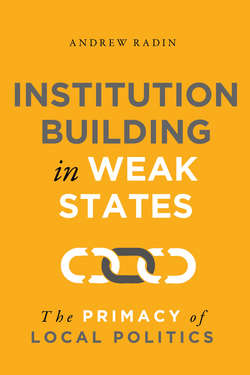Читать книгу Institution Building in Weak States - Andrew Radin - Страница 19
На сайте Литреса книга снята с продажи.
FRAMEWORK FOR ANALYZING THE STAGES OF A REFORM EFFORT
ОглавлениеThe domestic opposition theory and the case studies divide reform efforts into multiple stages. During a stage of reform, the foreign actor seeks to implement particular demands or recommendations. Each stage of reform is divided into the four steps shown in figure 2.1.
In the first step, foreign actors formulate and articulate the changes in the target state institution that they seek to accomplish. These changes may include adjustments in the formal rules, structures, or common practices of the institution. Desired changes may be framed as demands or recommendations depending on the international resources and the political and legal structure in place, including whether a foreign reformer has legal authority over a society or is acting more as an adviser to the sovereign government of the country. Where possible, I identify specific changes rather than general goals, for example, focusing on the requirement that a police institution is subordinate to the central government rather than a general goal that the accountability of the police force is improved. In identifying demands and recommendations, the case studies also focus on practical and realistic changes that foreign reformers sought to achieve rather than aspirational goals that they may have articulated. In the second step, domestic actors, including both elites and mass publics, decide whether to accept the reform or to oppose it either publicly or privately. In the third step of a reform stage, a state institution is more or less improved due to the behavior of foreign and domestic actors. In the fourth step, the foreign actor may either end the reform effort or may reformulate a new set of demands or recommendations and begin a new stage of reform. The new set of desired changes may be developed because of a recognition of past failure or because of some external decision, such as pressure from the countries supporting the foreign mission.
FIGURE 2.1. Steps in a Stage of Reform
This framework builds on the existing works analyzing peace or state building as a strategic interaction between foreign and domestic actors.1 The framework presented here breaks new ground by focusing on specific state institutions rather than society-level dynamics. The proposed steps in a stage of a reform effort do not necessarily happen in sequence. For example, the ruling elites may oppose a reform over the course of several years at the same time as the state institution is being gradually improved. Through its simplification of more complex reform efforts, the framework offers a means to understand how different actors’ decisions contribute to the ultimate outcome of reform.
